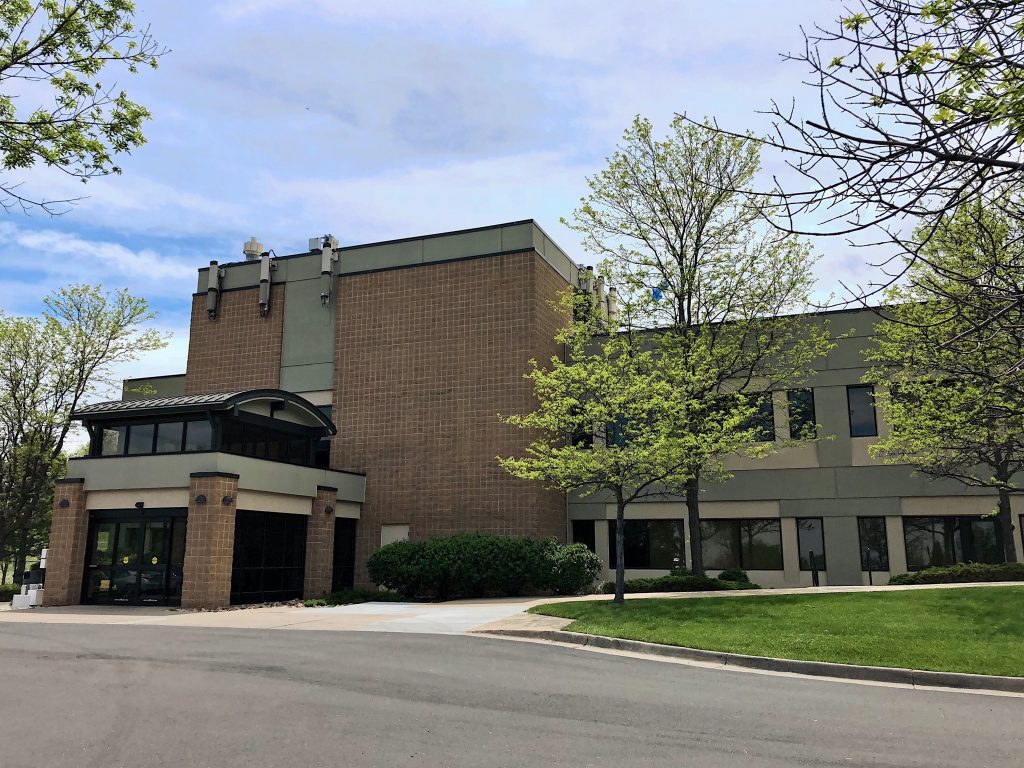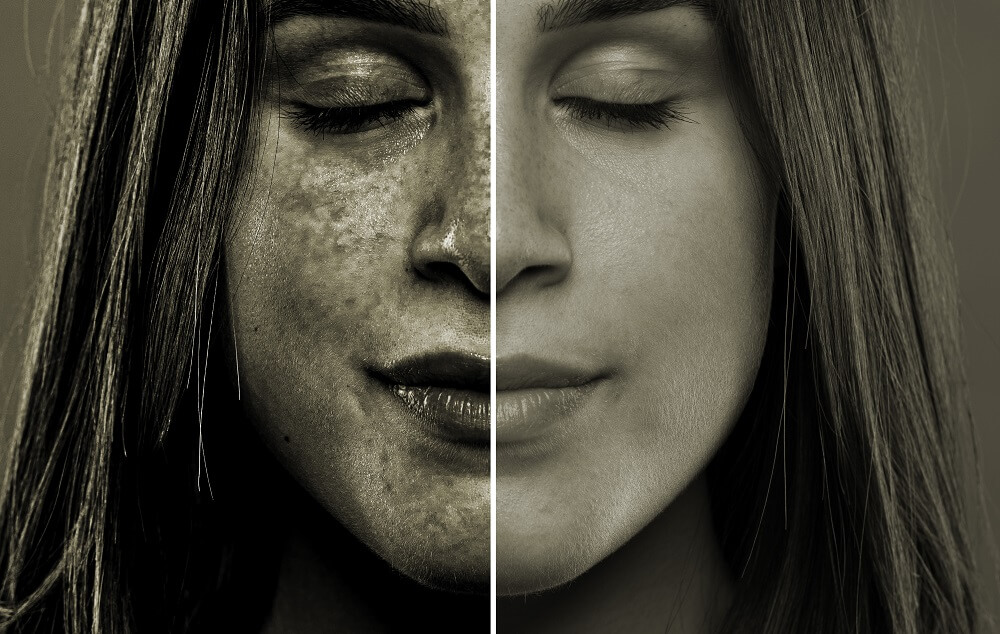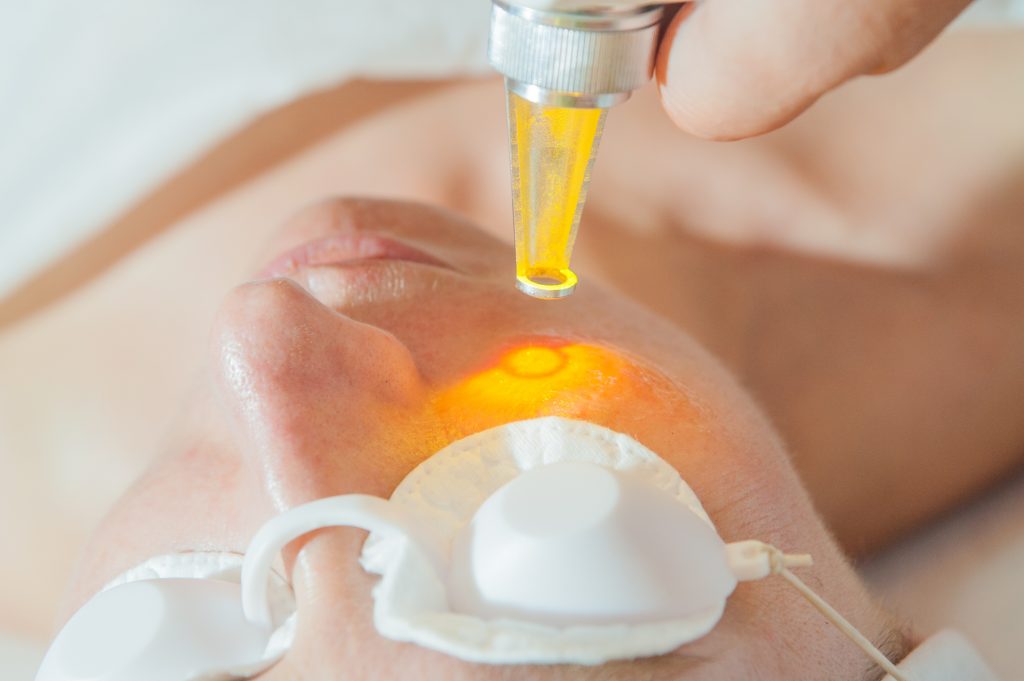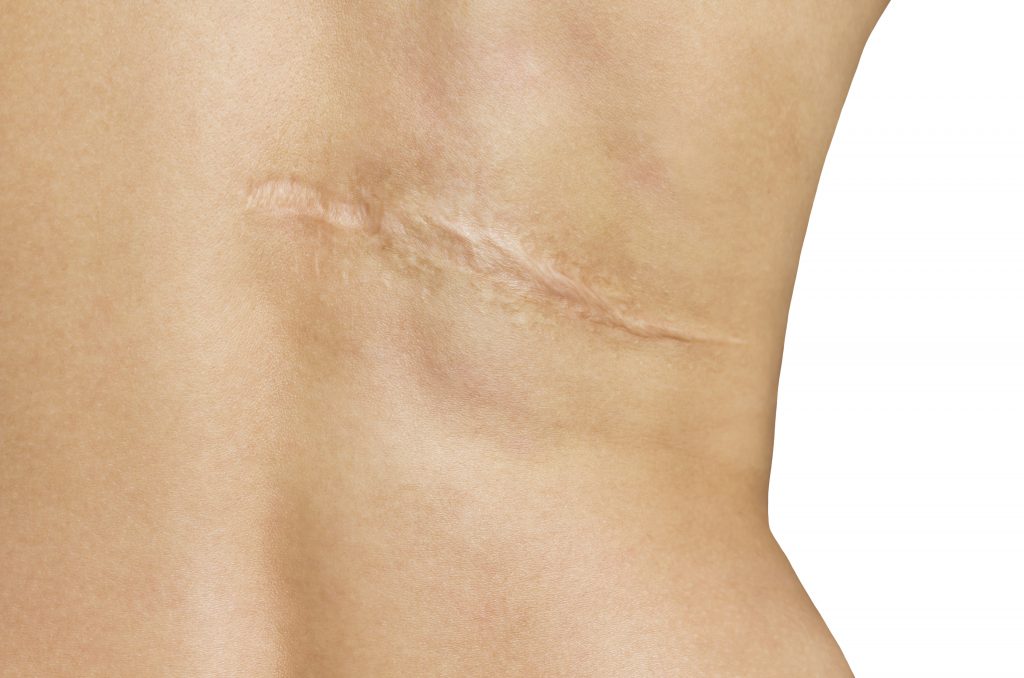Tina became a licensed paramedical aesthetician after receiving her certificate from the Colorado School of Paramedical Aesthetics in 2004. Her training and certificates include: Laser Safety/Physics, Palomar Intense Pulsed Light™ (IPL), Palomar Lux1540™ Fractional Laser, Cynosure 755 Alexandrite Laser, Cynosure 1064 ND:YAG Laser, Advanced Levulan PDT, microdermabrasion and chemical peels. Tina has always had a passion for skin health and continually strives to further her knowledge in the aesthetic industry. Tina is married and has two children. While not working Tina enjoys traveling around the world.
Clinic Locations
Services Offered By Tina Siegrist, PMA
What Is Actinic Keratosis?
Actinic Keratosis, also known as solar keratosis, is a scaly or crusty lesion on the skin that develops slowly and indicates the presence of sun damage. It is most commonly found on parts of the body frequently exposed to the sun including the bald scalp, face, ears, lips, backs of the hands or forearms, neck, and shoulders.
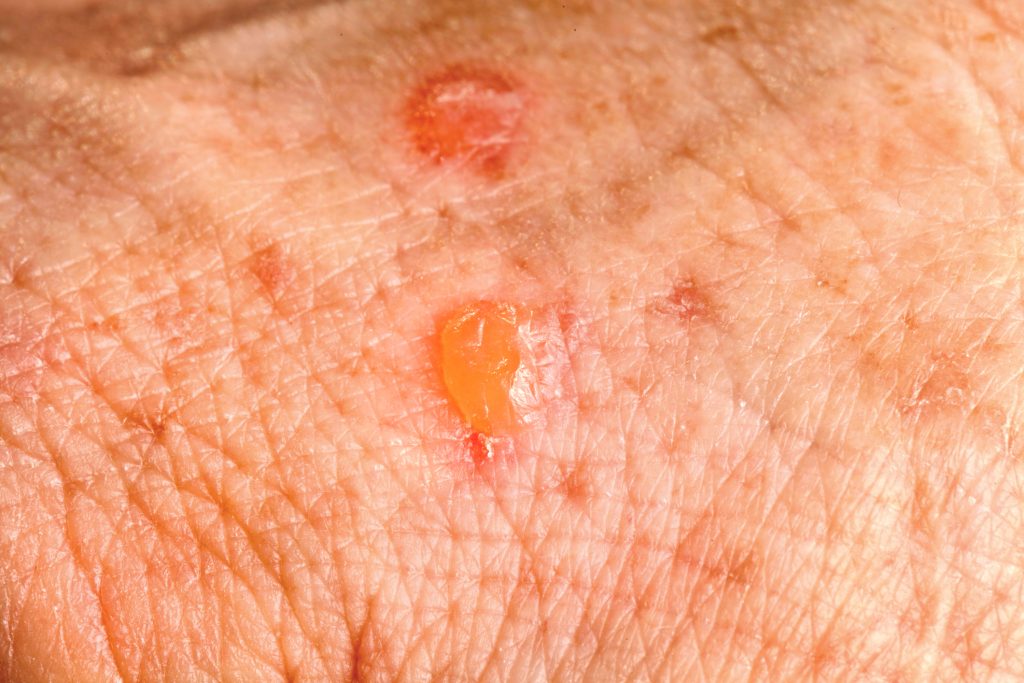
Actinic keratosis improves just two days after a freezing removal treatment.
Actinic keratoses are considered precancerous and can develop into a type of skin cancer called squamous cell carcinoma. In fact, some 40 to 60 percent of squamous cell skin cancers begin as untreated actinic keratoses.
Because of this, your doctor should be diligent in diagnosing, treating and monitoring actinic keratosis.
What Is Acne?
Acne is a dermatological condition caused by inflammation and mild infection in clogged pores. If not properly treated, acne can cause emotional distress, low self-esteem, and depression. In severe cases, it can even lead to permanent scarring.
While not a serious physical health threat, acne is an embarrassing skin problem that can be life-altering for many patients. Though it is most common among teenagers, acne can affect anyone, regardless of age or gender, and can be mild, moderate or severe.
What Is Melasma?
Melasma is a fairly common skin condition that creates the appearance of brown to gray-brown patches of skin, usually on the face. It can also occur on the neck and forearms and is the result of the body producing too much melanin, that natural substance that colors our hair, skin, and eyes.
If you’re dealing with dark spots or patches on your skin from the chronic condition melasma, the U.S. Dermatology Partners team can help you to improve the appearance of these spots and minimize the risk for future flare-ups of the condition. Read the page below to learn more or reach out to the U.S. Dermatology Partners location nearest you for more information.
Safe and Effective Skin Cancer Treatment
Photodynamic Therapy, often referred to simply as PDT, is a medical treatment that uses photosensitizing agents and light exposure to treat a range of conditions, including skin cancers, acne, and actinic keratosis (“pre-cancers”). You can learn more about photodynamic therapy on this page, and the U.S. Dermatology Partners team would love to hear from you if you’re interested in scheduling a consultation to discuss photodynamic therapy. Simply use our online request form to schedule a consultation visit at the U.S. Dermatology Partners office closest to you.
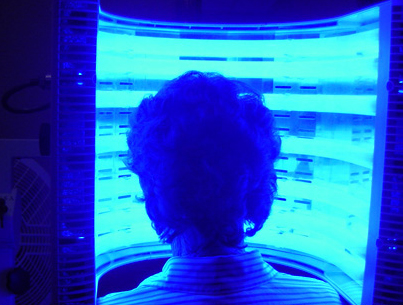
Image Source: MedicineNet.com
What Is Rosacea?
Rosacea is a fairly common skin condition that causes redness in your face. In some cases, it may also produce small, red, pus-filled bumps. Typically these signs and symptoms may flare up for a period of weeks to months and then diminish for a while.
Rosacea may sometimes be mistaken for acne, an allergic reaction or other skin problems. It is believed to be caused by a combination of hereditary and environmental factors.
Learn more: 4 Types of Rosacea
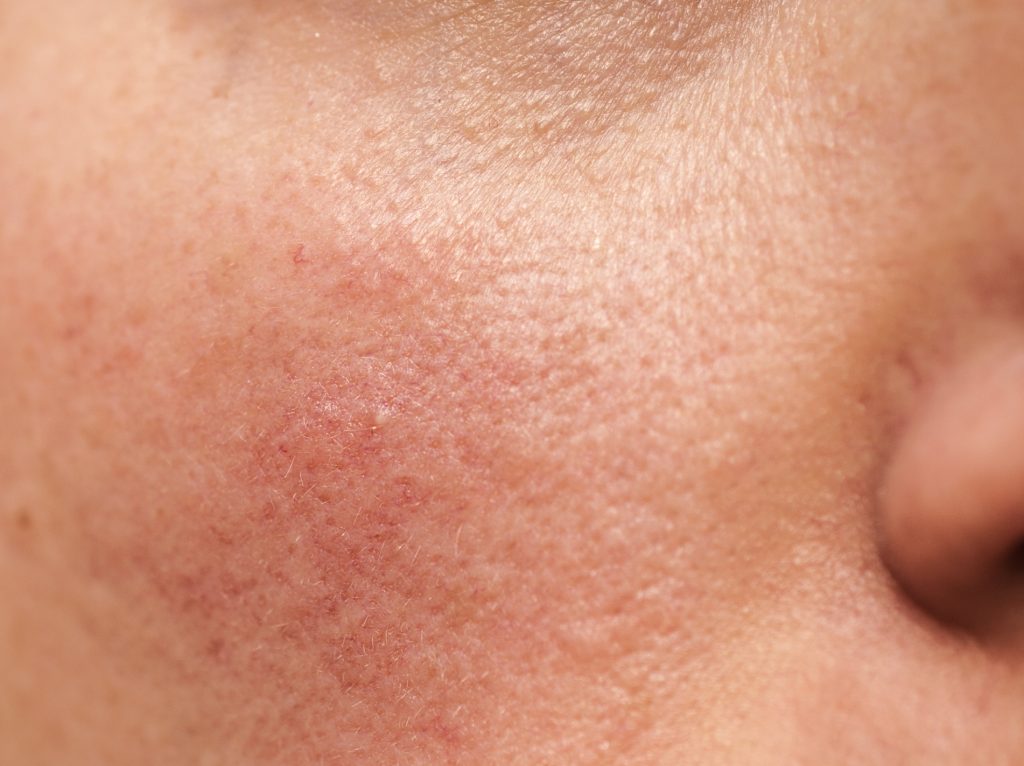
Rosacea causes redness on the face.
What Is Sebaceous Hyperplasia?
Sebaceous hyperplasia is a benign bump on the skin that forms as a result of over-productive oil glands. When oil glands are damaged, they can become enlarged and clogged, leading to this condition. It is primarily a cosmetic concern rather than a medical problem.
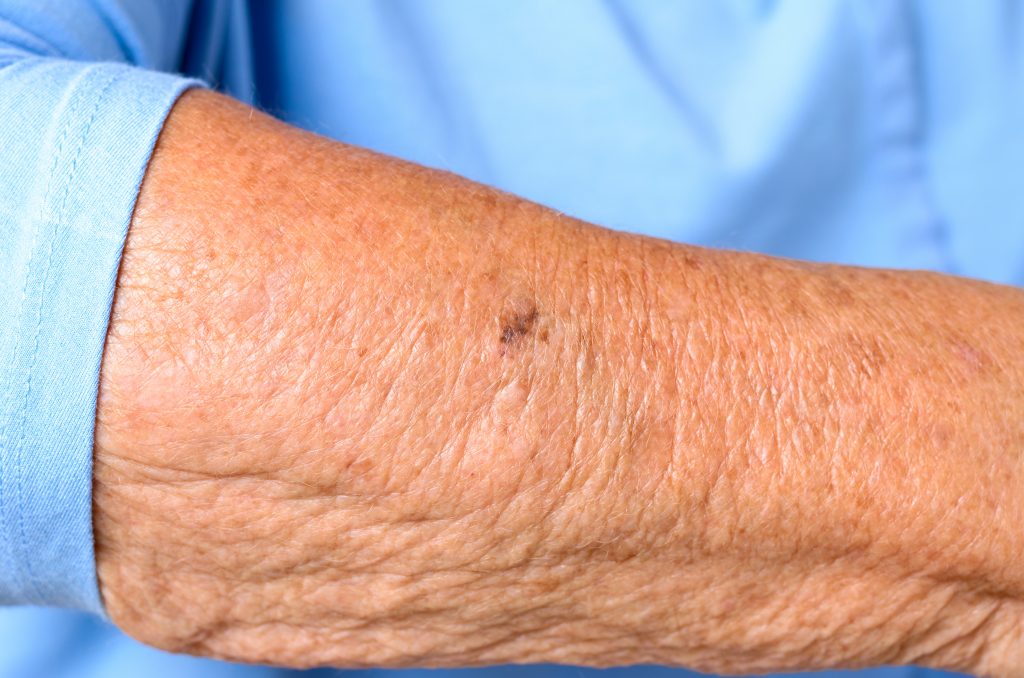
Sebaceous hyperplasia is a benign bump on the skin that forms as a result of over-productive oil glands.
What Is Seborrheic Keratosis?
Seborrheic keratosis is one of the most common noncancerous skin growths found in older adults. It most commonly appears as a brown, black or light tan growth on the face, chest, shoulders or back. Although they are not cancerous, they can look like skin cancer.
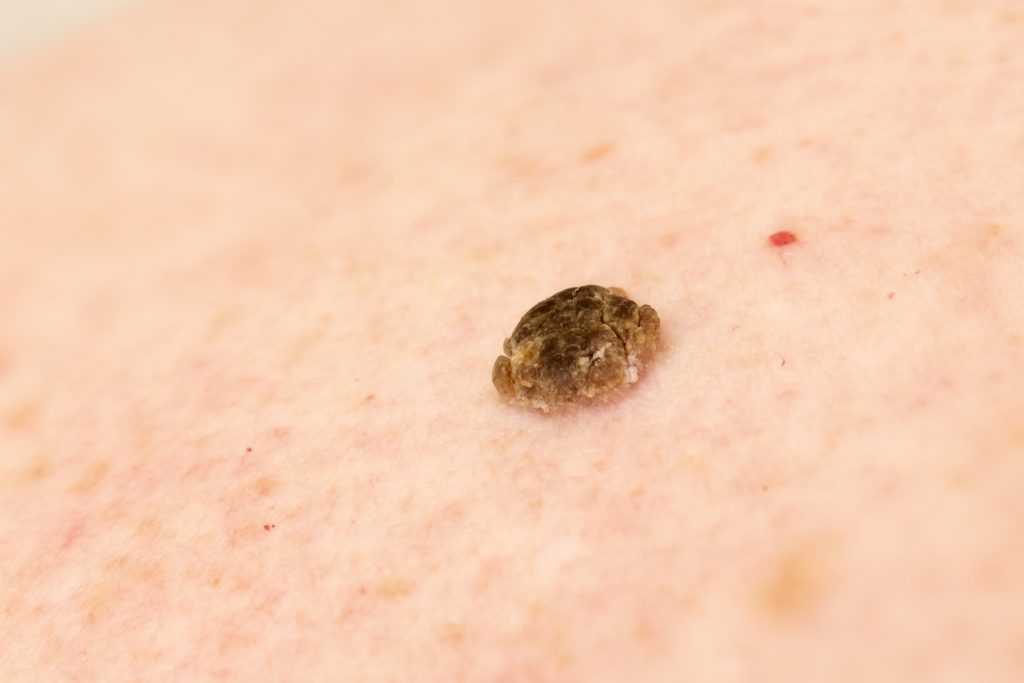
Seborrheic keratosis is also known as seborrheic verruca or a senile wart.
What Is Sun Damage?
The sun can age and burn your skin, and it can also cause damage on the cellular level, leading to skin cancer. The good news is, the U.S. Dermatology Partners team can help you formulate a plan to prevent sun damage and repair the effects of the sun’s UV rays so that you can go out and enjoy a sunny day. Learn more on this page or contact U.S. Dermatology Partners to schedule an appointment with us.
Sunscreen 101
Individuals who are prone to sunburn are thought to be genetically predisposed to skin cancer. Risk is also increased when exposure to UV rays is excessive. Sunscreen helps prevent the damaging effects of ultraviolet radiation, including skin aging and skin cancer like melanoma and squamous cell carcinoma.
Sunscreens are rated and labeled with a sun protection factor (SPF) that measures the fraction of sunburn-producing UV rays that reach the skin. The higher the SPF, the greater the protection.
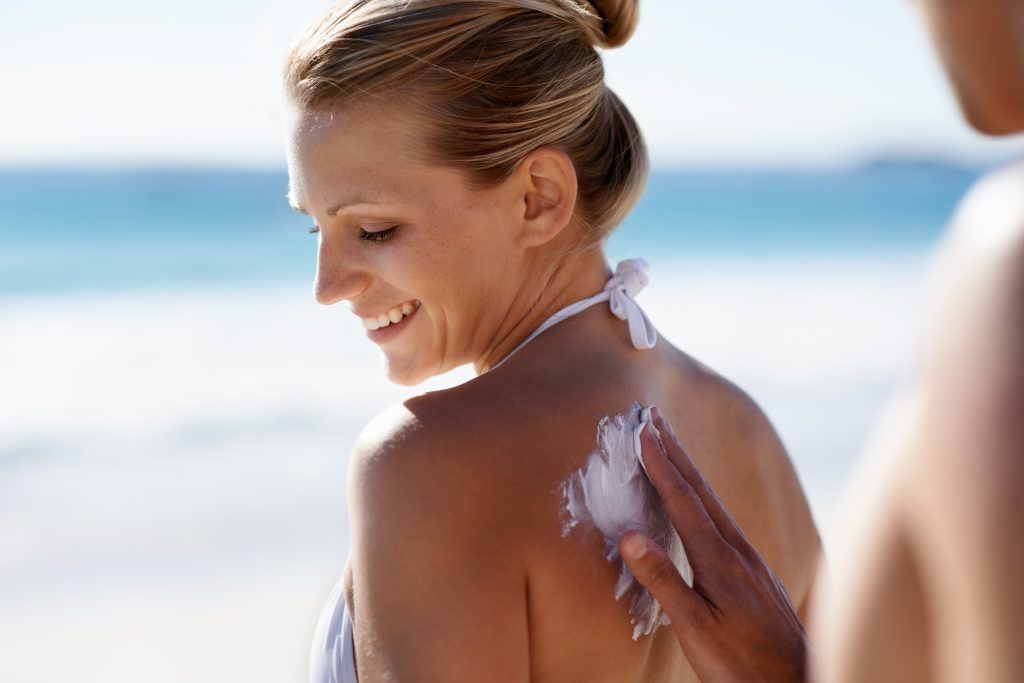
Sunscreen is a topical product that is used to reflect or absorb some of the ultraviolet rays from the sun.
What Are Warts?
Warts are benign, non-cancerous growths that appear on the skin as the result of a virus called human papillomavirus, or HPV. They are contagious and are spread by contact – either with the wart or something that touched the wart. Cut or damaged skin is more vulnerable to warts.
Related: How to Identify a Wart
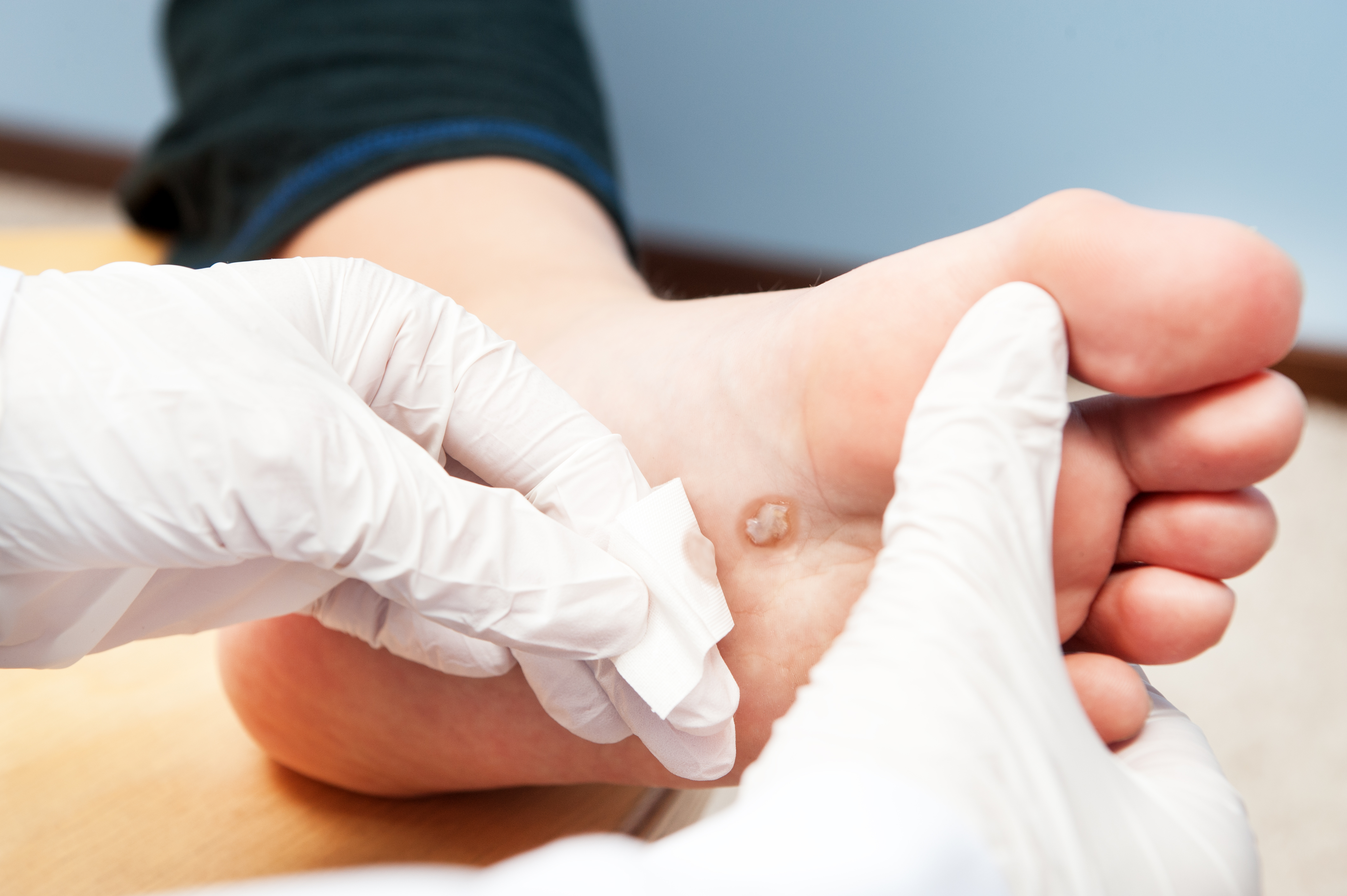
Warts are benign, non-cancerous growths that appear on the skin as the result of the human papillomavirus.
What Is Body Contouring?
Body Contouring is a non-surgical way of reducing fat. Today there are many different technologies on the market that use technologies like ultra-low temperatures to freeze fat (see CoolSculpting, TruSculpt iD, CoolTone, or SculpSure for more details) or ultrasonic waves and radio frequencies to melt fat.
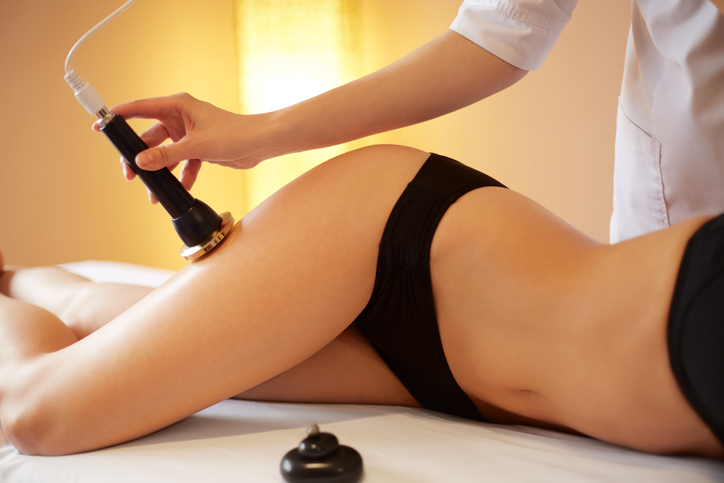
Body contouring can be done on many areas of the body, including the abdomen, waist, and arms and legs.
Types of Chemical Peels Explained
When it comes to dermatological treatments that will help people reclaim a youthful glow, create an even skin tone, and minimize the appearance of scars, chemical peels offer a conservative solution that addresses all of these concerns. Chemical peels are versatile treatments that help to improve the health and appearance of the skin, and just about every patient could benefit from the procedure. If you’re interested in learning more, continue reading below or get in touch with a U.S. Dermatology Partners location near you to schedule your visit.
What Is Dermaplaning?
Dermaplaning is a safe and effective physical exfoliation procedure that triggers cell regeneration and allows products to better penetrate the skin. Dermaplaning is considered excellent for ridding the face of excess fine hairs which can often accumulate dirt and oil.
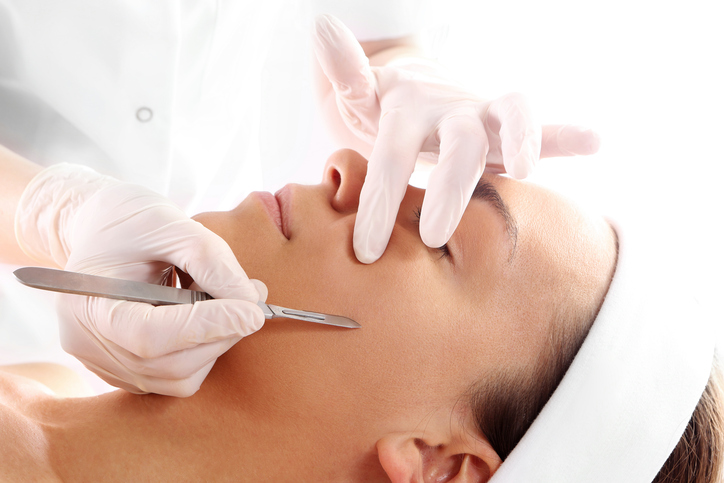
Dermaplaning is a form of physical skin exfoliation that helps the skin appear younger, healthier and more vibrant.
What Are Facials?
Facials are a multi-step skin treatment that cleans, exfoliates and nourishes the skin. They are designed to help your skin look younger and create a well-hydrated complexion.
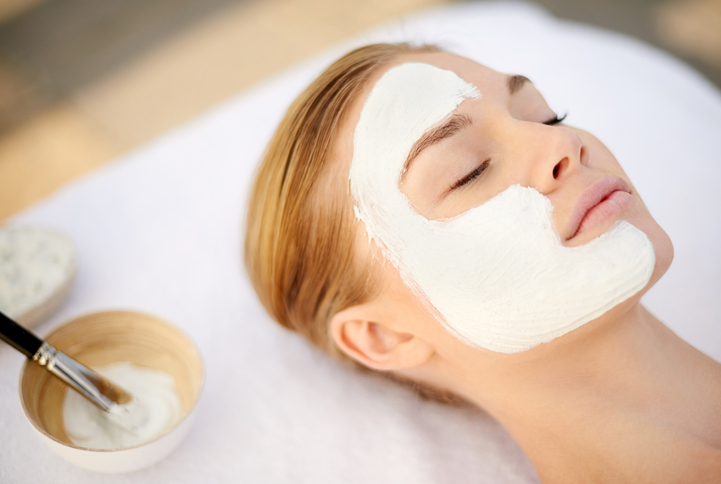
Deep cleansing facials can be as relaxing as they are effective.
What Is a HydraFacial?
A HydraFacial is a treatment, similar to microdermabrasion, that’s designed to refresh and rejuvenate your skin without downtime or irritation after the procedure. HydraFacials provide instant results and leave your skin looking healthier and younger. The three-step process begins by cleansing skin, then exfoliating, before finishing with a targeted “booster” serum designed to address your specific skin conditions and concerns while hydrating the skin.
Rather than using abrasive exfoliants, as is the case with microdermabrasion, the entire HydraFacial process relies on the unique tool that simultaneously draws dead skin cells, oils, toxins, and other buildup out of the skin while applying nutrient-rich and soothing products like hyaluronic acids, antioxidants, peptides, and other restorative products. This increases the efficacy of skincare products by introducing them to skin without dead skin cells or clogged pores presenting obstacles that prevent these treatments from being completely effective. In addition to the basic HydraFacial process, your dermatologist can also customize your treatment plan to include added procedures like light or oxygen therapy, dermal fillers, neurotoxin injections, and other cosmetic solutions.
HydraFacials offer numerous benefits, including:
- Loosening and removing dead skin cells
- Clearing pores
- Delivering a brighter skin tone
- Offering a low-intensity, gentle exfoliation solution
- Promoting skin’s collagen and elastin production
- Generating healthy cell turnover
- Reducing the number of flare-ups and breakouts related to common skin conditions
- Maintaining a more youthful appearance through increased fullness and elasticity
- Diminishing the size of enlarged pores
- Lightening dark spots on the skin
- Creating a personalized facial treatment that is tailored to the individual’s skin care needs
What Is IPL Photo Rejuvenation?
We all want to look our very best and an IPL photo rejuvenation treatment, also called a photofacial treatment, can help many people reclaim smooth, youthful skin with even tone and pigmentation. In short, you’ll be photo-ready. When it comes to aesthetic treatment like IPL, it’s always best to partner with a knowledgeable dermatologist who can ensure you achieve the results you’re after while limiting potential damage to your skin. You can learn more about this cosmetic treatment option on this page and by contacting the U.S. Dermatology Partners location nearest your home. We look forward to hearing from you soon!
What Are Keloids?
Keloids are raised, red scars created by excessive healing of skin wounds, such as burns, cuts and acne. They are the result of an overproduction of collagen as the skin tries to repair itself. Keloids also can occur after piercings, tattoos or surgery and often times are itchy and painful. They can grow for years and sometimes show up three months or longer after the injury occurred.
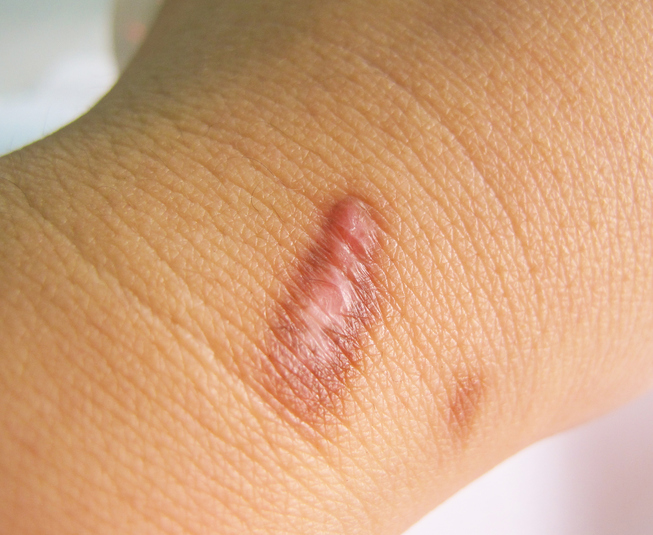
Keloid are caused by an overproduction of collagen as the skin tries to repair itself.
What Is Laser Hair Removal?
Laser hair removal is a medical procedure that uses laser technology to remove unwanted hair. U.S. Dermatology offers high-quality laser hair removal treatment all throughout the USA, click here to see which locations are near you.
What Is Laser Rosacea Therapy?
Laser rosacea therapy is a way to treat a rosacea complexion. One of the most common and effective treatments is the pulsed dye laser (PDL), which targets visible blood vessels and can reduce redness and flushing by destroying the lining of the inflamed blood vessels.

Rosacea on facial skin is treatable with laser rosacea therapy.
What Is Laser Skin Resurfacing?
Laser skin resurfacing is a treatment used to reduce facial wrinkles and skin conditions including acne, scars, warts, enlarged glands on the nose and more.
The process vaporizes the upper layers of skin, which creates a wound that encourages the body to produce new collagen. The collagen and elastic fibers tighten as they heal, and the tightened skin eliminates wrinkles as it pulls together.
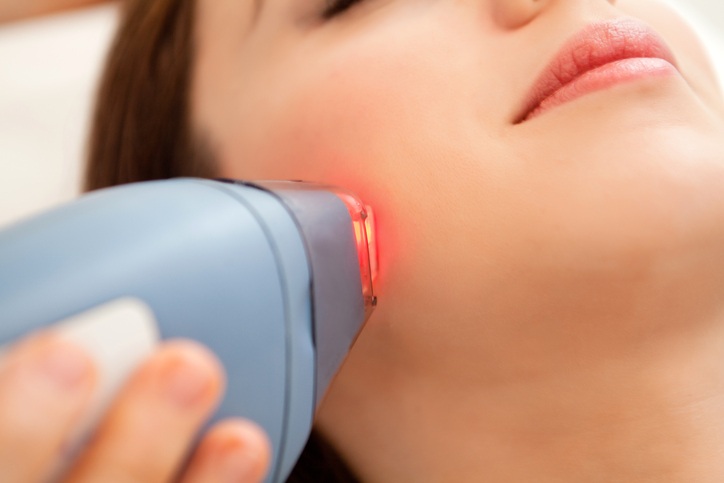
Laser skin resurfacing reduces facial wrinkles and treats skin conditions.
What Are Laser Treatments?
Laser treatments work by using specific wavelengths of light to interact with tissue, which can positively affect pigment, blood vessels, hair follicles and moisture in the skin. The result is improved skin tone and texture, as well as the tightening of loose skin.
Lasers can also be tuned to very specific frequencies to perform different tasks and can even be used in surgery to allow doctors to work on a very precise area with less pain, swelling and scarring than traditional surgery.
Cosmetically, lasers can be used for skin resurfacing and to treat such things as acne, wrinkles, rosacea and more.
What Is Laser Vein Reduction?
Laser vein reduction uses light focused on a specific area to break up broken blood vessels. This allows them to be absorbed back into the body. It is most often used for eliminating spider veins.
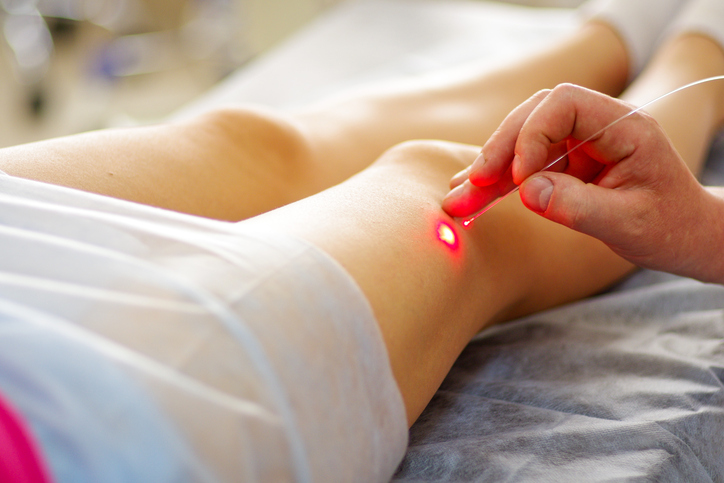
Vein laser treatment breaks up broken blood vessels.
What Is Latisse?
Latisse is a product designed to help grow eyelashes and has been on the market since earning FDA approval in December 2008. It is designed to help grow longer, lusher eyelashes and is available only by prescription.
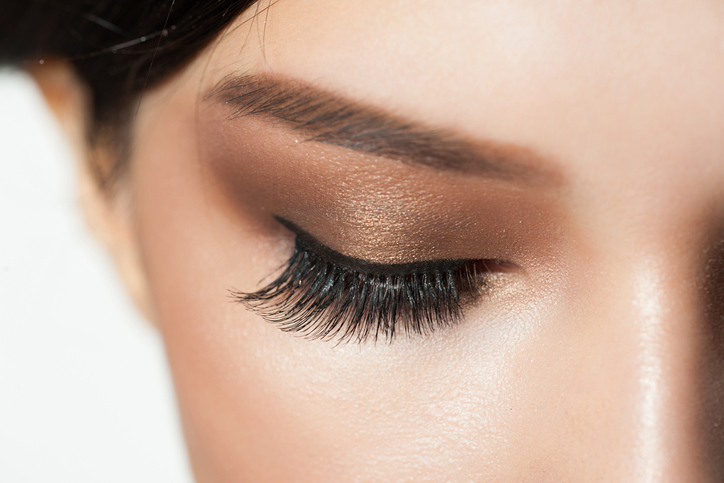
Latisse eyelash enhancement helps eyelashes to grow longer and lusher.
What Is Microdermabrasion?
Microdermabrasion is a treatment that can help improve the appearance of facial skin. It is used for reducing wrinkles and treating a variety of conditions including acne, scars, warts, enlarged glands on the nose and more.
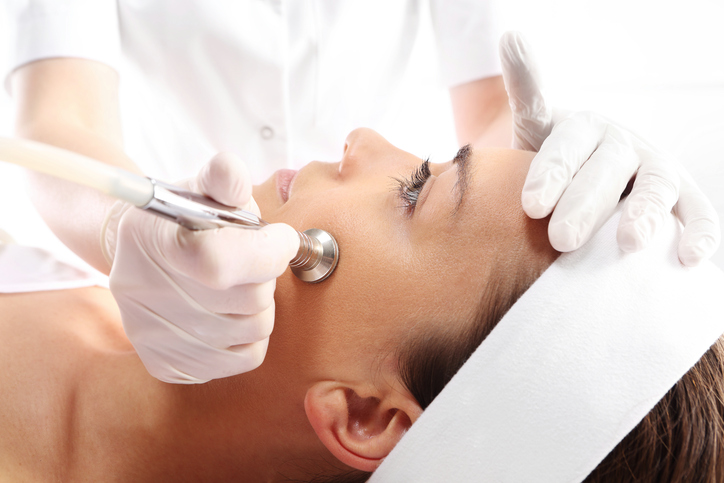
Microdermabrasion improves the texture and appearance, along with creating better circulation and lymph flow.
What are the Benefits and Side Effects of Microneedling?
We all want our skin to be smooth, flawless, and firm, but aging, sun exposure, acne, chronic skin conditions, and other issues can lead to rough, uneven skin tone and texture. Many people think that invasive cosmetic procedures or surgeries are the only options to improve the skin, but microneedling offers a minimally invasive solution to promote collagen production and healthy skin growth for a smoother and more youthful appearance. At U.S. Dermatology Partners, our dermatologists offer microneedling to help individuals look and feel their best without the need for more invasive procedures. When you’re ready to get started, contact the U.S. Dermatology Partners location near you to schedule your cosmetic dermatology consultation. We look forward to hearing from you.
What Is Platelet-Rich Plasma (PRP) Therapy?
Platelet-rich plasma therapy, or PRP, is a non-surgical method of skin rejuvenation that uses your own blood to improve the appearance of facial tissue.
Recent research has shown that PRP is also effective at treating alopecia.
Understanding Scar Development & How to Address These Skin Flaws
We all want healthy, beautiful skin. But scars, a natural part of the healing process, leave a lasting mark and cause some people to struggle with the negative impact on the appearance of their skin and in some cases, limitations in function or other concerns. If you’re unhappy with the appearance, texture, or health of your skin after an injury, surgery, or other damage that leads to scarring, the U.S. Dermatology Partners team can offer treatment to improve the appearance of scarring.
What Is Skin Lightening?
Skin lightening is a process used for people who want to lighten certain areas of skin that are affected by such things as melasma, age spots or even freckles.
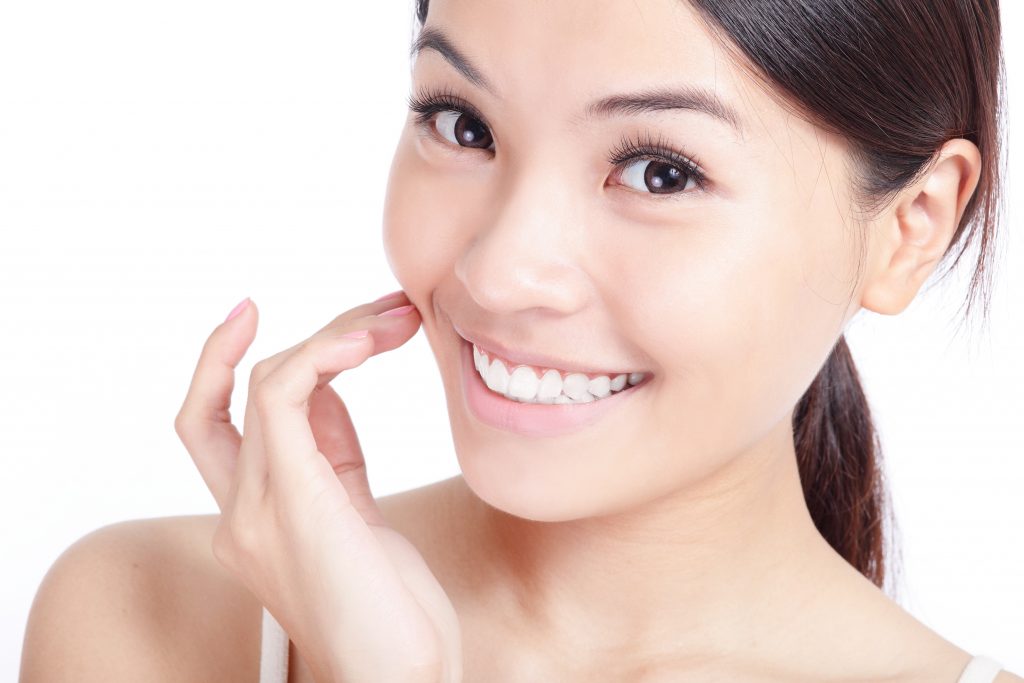
Skin lightening can help provide a smooth, even skin tone.
What Are Spider Veins?
Spider veins are blood vessels that are visibly enlarged and can be seen on the face as well as other areas of the body, most commonly the legs. They may also be called broken blood vessels or thread veins, and appear as hairline marks that can be red, bluish or purple. They most often appear on the nose, chin or cheeks.
Broken blood vessels occur when the skin has been damaged. They are often caused by falls or accidents that caused bruising, or by scrubbing the face too vigorously. However, spider veins also can be caused by such factors as aging, pregnancy, estrogen replacement therapy, sun damage and rosacea. In the legs, they may be caused or worsened by standing or sitting for long periods of time, obesity and constipation.
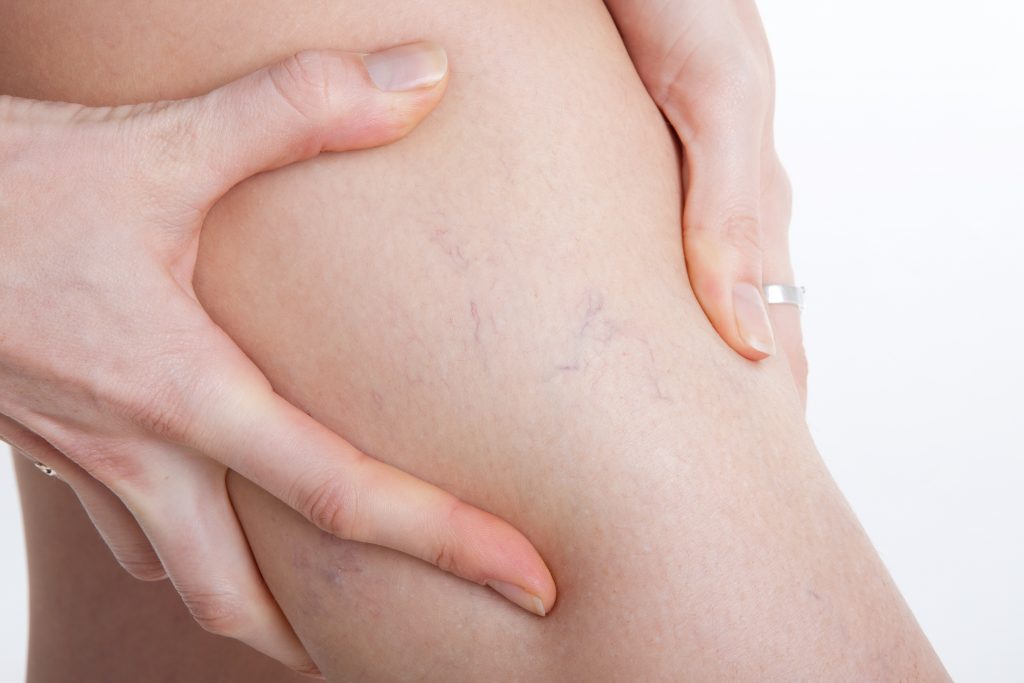
Spider veins are visibly enlarged blood vessels.
What is Vivace?
Vivace is an innovative new cosmetic dermatology solution that combines microneedling with state-of-the-art radiofrequency technology to deliver exceptional results in helping maintain skin that looks smooth and youthful. If you’re interested in learning about how Vivace reduces the appearance of fine lines and wrinkles, you’ll find some of the basic details about the Vivace treatment process on this page. When you’re ready to experience premier dermatology services with the U.S. Dermatology Partners team, you can get started today by filling out our online appointment request. We have numerous dermatology practices across Arizona, Colorado, Kansas, Maryland, Missouri, Oklahoma, Texas, and Virginia.
Whatever our age or skin type, we all want the same thing – to keep our skin looking youthful and flawless as long as possible. Despite our best efforts, wrinkles and fine lines will still develop over time. Traditional methods of minimizing the appearance of fine lines and wrinkles can be uncomfortable or ineffective, but Vivace is a quick, minimally invasive solution that effectively reduces fine lines and wrinkles, allowing you to age gracefully and look and feel your best at any age.
The Vivace treatment process combines these four effective treatments to deliver exceptional results:
- Microneedling is a cosmetic dermatology treatment that harnesses the skin’s healing powers to restore a more youthful appearance. The procedure involves using a small gauge needle to create microscopic injuries to the skin. These micro-injuries jump-start the healing process, causing the skin to produce more collagen and promote faster cell turnover.
- Radiofrequency technology uses heat to stimulate the production of collagen in deeper layers of skin. This means that, as the surface-level skin cells are replaced with new, healthy cells, patients will maintain a smooth, youthful appearance longer.
- Cooling peptide masks – applied immediately following treatment to soothe skin, prevent inflammation, and improve the results of treatment.
- Deep moisturizing serum & protective balm – before you leave, a soothing serum is applied and will need to remain on the skin for at least six hours to protect the treatment area and further improve the results.


